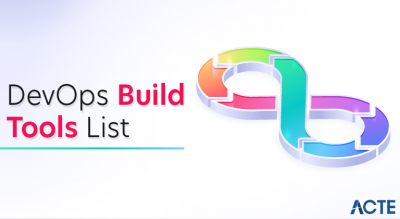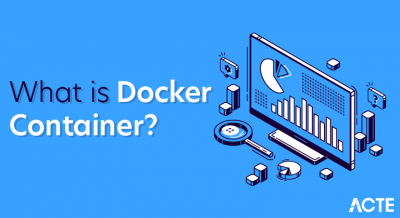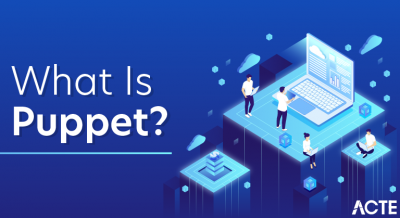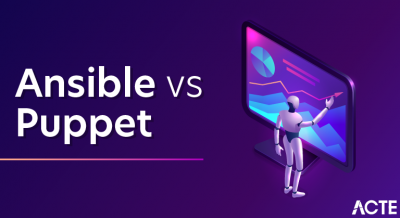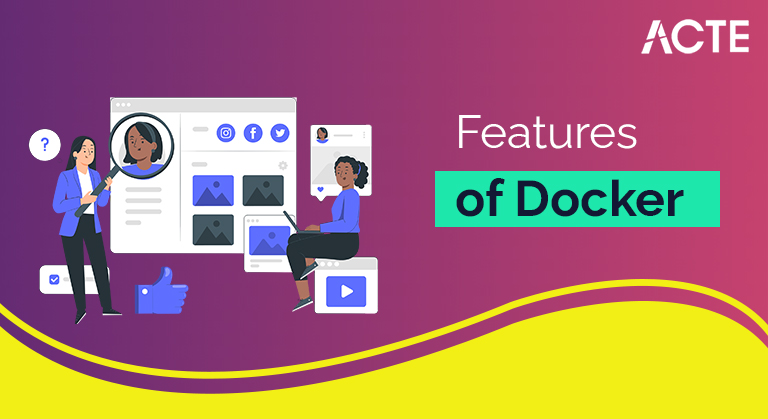
Docker is an open source containerization platform. It enables developers to package applications into containers—standardized executable components combining application source code with the operating system (OS) libraries and dependencies required to run that code in any environment.
- Introduction to Docker
- How Docker works
- Features of Docker
- When to use Docker
- Overview of Docker Compos
- Docker Architecture
- Why use Docker?
- Operation
- Benefits of Docker
- Conclusion
Introduction to Docker:
Docker may be a software package platform that enables you to create, test, and run applications instantly. Loader packs software packages into normal units referred to as containers that have everything the software package has to run as well as libraries, system tools, code, and in operation time. Using loader, you’ll quickly send and rate applications anyplace and grasp that your code can work. Running loader in AWS provides associate engineer and manages the foremost reliable, cheap thanks to build, deploy, and deploy applications that are distributed on any scale.
Recent Announcements: loader is functioning with AWS to assist developers to accelerate the delivery of contemporary applications within the cloud. This collaboration helps developers use loader Compose and loader Desktop to leverage identical native workflows they use nowadays to seamlessly deploy applications on Amazon ECS and AWS Fargate. scan the diary for additional data.
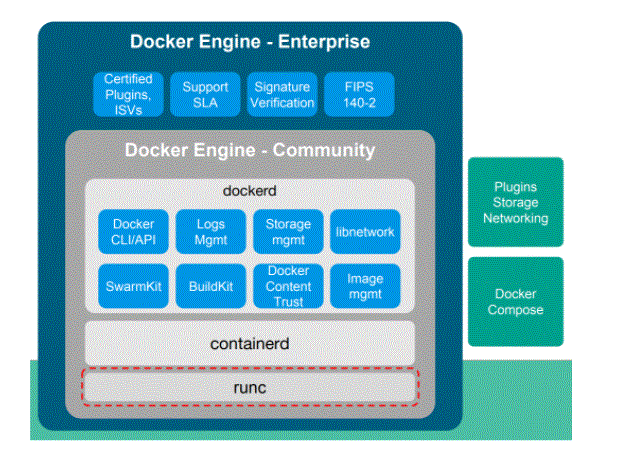
How Docker works:
Docker works by providing a common way to use your code. Docker is a container operating system. Similar to the way a virtual machine works (eliminates the need to directly manage) server hardware, containers make the server application more realistic. Docker is installed on each server and provides simple instructions that you can use to build, start, or configure containers. AWS services such as AWS Fargate, Amazon ECS, Amazon EKS, and AWS Batch make it easy to use and manage Docker containers on a scale.
- Quick and easy setup
- Application classification
- Increased productivity
- The hill
- Services
- Routing Mesh
- Security Management
- Rapid system rating
- Best Software Delivery
- Software-defined network
- It has the ability to reduce size
- Docker Features
Features of Docker:
Docker offers a variety of features, some of which are listed and discussed below.
1. Quick and easy setup:
It is one of the most important features of Docker that helps you set up the system quickly and easily. Due to this feature, codes can be entered in a short time and with little effort. The infrastructure is not linked to the application environment as Docker is used with a variety of locations.
2. Application classification:
Docker provides containers that are used to run programs in a single location. Since each container is independent, Docker can use any type of program.
3. Increased productivity:
It helps increase productivity by simplifying technology configuration and deploying applications faster. In addition, it not only provides a separate space for applications to run, but also reduces resources.
4. Group:
Swarm is a tool for assembling and arranging these Docker containers. Initially, it uses the Docker API, which helps us use a variety of tools to control it. It is an automated group of engines that make the backends connected.
5. Services:
Services are a list of tasks that specify the status of an internal container. Each service in the Service lists one example of a container to operate, while Swarm organises them in all locations.
6. Security Management:
It maintains confidentiality in the swerm and chooses to provide services to access certain secrets, including a few key commands in the engine such as confidential testing, confidential creation, etc.
7. Rapid system measurement:
Containers require less computer hardware and get more work. They allow data centre operators to squeeze a lot of work into smaller hardware, which means hardware sharing, which leads to lower costs.
8. Best Software Delivery:
Software delivery with the help of containers is said to work very well. Containers are portable, self-contained and include a single disk volume. This separated volume corresponds to the container as it grows and is distributed in various locations.
9. Software-defined network:
Docker supports Software-defined networking. In addition to touching a single router, Docker CLI and Engine enable operators to define individual network networks. Users and Developers design systems with complex network themes, as well as define networks in configuration files. Since the application containers can operate on a virtual single network, with a controlled login and exit, it serves as a security advantage as well.
10. Ability to Limit Size:
As it provides a small foot OS with containers, Docker has the ability to reduce the size of the development.

- 100x100_benefit_containers
- MICROSERVICES
- Build and evaluate the construction of distributed applications by taking advantage of standard coding using Docker containers.
- 100x100_benefit_delivery
- CONTINUED CONNECTION AND SUBMISSION
- Speed up application delivery by pausing and clear conflicts between language stacks and versions.
- AWS_Benefit Icon_AutomatedOperations
- CONTINUED DATA
- Provide data processing as a service. Package data and portable statistical packages that can be used by non-technical users.
- 100x100_benefit_get-start-2
- IMAGES AS A SERVICE
- Build and deploy distributed applications with IT-controlled content and secure infrastructure.
When to use Docker:
You can use Docker containers as the main building block that creates modern applications and forums. Docker makes it easy to build and deploy distributed microservices, use your code with continuous integration with delivery pipelines, build as many data processing systems, and build fully managed forums for your developers. The latest interaction between AWS and Docker makes it easy for you to post Docker Compose art on Amazon ECS and AWS Fargate.
- Create jobs in all areas: production, stage, development, testing, and CI workflow. You can learn more about each case in the Standard Use Case.
- Using Composing is a three-step process:
- Specify the location of your application with Dockerfile to be reproduced anywhere.
- Describe the services that make up your application in docker-compose.yml for use together in a single location.
- Launch docker name and Docker naming command starts and runs your entire app. You can also use docker-compose up using binary docker-compose.
- Docker-compose.yml looks like this:
- version: “3.9” # optional from v1.27.0
- services:
- web:
- create:.
- ports:
- – “5000: 5000”
- volumes:
- -.: / code
- – log volume 01: / var / log
- links:
- – reset
- redis:
- photo: redis
- volumes:
- logvolume01: {}
- Start, stop and rebuild services
- View resource usage status
- Distribute logs for active service logs
- Run one command per service
Overview of Docker Compose:
Compose is a tool for defining and using Docker systems with multiple containers. By composing, you are using the YAML file to configure your application resources. Then, with one command, you create and launch all services from your configuration. To learn more about all the elements of design, see the list of features.
For more information about the Write file, refer to the Write file.
The composition contains lifetime management instructions for your application:
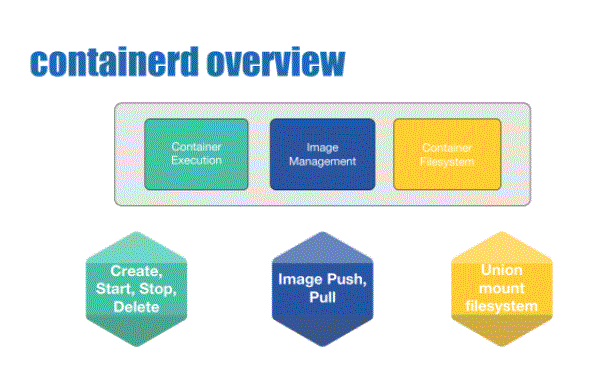
- docker run -i -t ubuntu / bin / bash
- docker run -d –name geekflare -v geekvolume: / app nginx: latest
Docker Architecture:
Let Pine Tree State justify the elements of loader design.
Docker Engine
It is an associate degree integral part of the whole loader system. Loader Engine is an associate degree application that follows the configuration of a shopper server. put in on a bunch of machines. There are 3 components to loader Engine:
Server: A loader daemon referred to as docked. It will produce and manage loader pictures. Containers, networks, etc.
Rest API: accustomed to instruct the loader daemon on what to try to do.
Command Line Interface (CLI): A shopper accustomed to installing loader commands.
Docker shopper
Docker users will communicate with the loader via a shopper. If any loader commands work, the shopper sends it to the loader daemon, and it will. The loader API is employed for loader commands. Loader customers will communicate with over one daemon.
Docker Registries
It is a place wherever loader photos are held. It will be a public dock registration or a non-public dock registration. Loader Hub is the default location for loader photos, its public searching list. you’ll additionally produce and use your own non-public subscriptions. When you issue loader drag or loader run commands, the desired image is dragged to the default register. Once you issue a loader push command, the image of the loader is unbroken within the default register.
Docker things
When operating with a loader, you utilise pictures, containers, volumes, networks; all of those are loader things.
Photos
Docker pictures are the sole learning templates with directions for building a loader instrumentation. The loader image will be drawn from the loader hub and used as is, otherwise you will add extra commands to the essential image and build a replacement and changed dock image. you’ll produce your own loader pictures victimising the dockerfile. produce a loader file with all the directions for building an instrumentation and run it; you can produce your own custom docker image. Docker Image has a solely decipherable base layer, and a prime layer will be written. If you edit the loader file and build it, solely the changed half that’s restored is that the prime layer.
Dishes
After you utilise the loader image, we have a tendency to produce loader instrumentation. All apps and their locations work inside this instrumentation. you’ll use the loader API or command-line interface to start out, stop, and take away the loader instrumentation.Below could be a sample instruction on the way to use an instrumentation loader personality:
Scrolls
Continuous knowledge generated by loaders and utilised in loader containers is held on in Volumes. utterly managed by loader with loader command-line interface or loader API. Volumes work on each Windows and UNIX system container. rather than storing knowledge in an exceedingly removable instrumentation layer, it’s invariably a decent choice to use it for volumes. Volume content is outside the instrumentation life cycle, thus victimisation volume doesn’t increase instrumentation size. You can use the -v or mount flag to start out the instrumentation by volume. During this sample command, you utilise a geek volume with a geekflare instrumentation.
Networks
Docker networking could be a passage wherever all non-public containers are connected.
There are essentially 5 network drivers within the docker:
Bridge: it’s the default network driver for the instrumentation. you’re victimising this network once your application is running non-public containers, i set multiple containers that are connected to constant loaders.
Host: This driver removes the network partition between the loader containers and also the loader host. Used if you are not would like a network split between host and instrumentation.
Overlay: This network permits swarm resources to attach mechanically. Used once containers run on numerous loader hosts or once swarm resources are designed for multiple applications.
None: This driver shuts down all networks.
macvlan: This driver provides macintosh addresses to containers to make them appear as if they were visual machines. Traffic is transmitted between containers by their macintosh addresses. This network is employed if you would like the containers to appear sort of a transportable device, for instance, whereas moving VM settings.
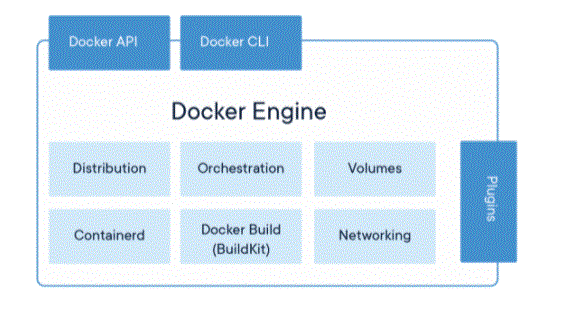
- 100x100_benefit_deployment1
- SEND MORE SOFTWARE IMMEDIATELY
- Docker users average 7x shipping software more often than non-Docker users. Docker allows you to send individual applications as often as needed.
- 100x100_ tools_profits
- BE LIMITED
- Small application-containing applications make it easy to feed, diagnose, and revert to repair.
- 100x100_benefit_migration
- GO ON SEWING
- Docker-based applications can be easily moved from local development machines to production applications in AWS.
- 100x100_benefit_lowcost-affordable
- GROUP OVER
- Docker Containers make it easy to apply additional code to each server, improve your usability and save money.
Why use Docker?
Using Docker allows you to send code faster, evaluate application performance, move code seamlessly, and save money by improving app usage. With Docker, you get one thing that can work reliably anywhere. The simple and straightforward Docker syntax gives you full control. Extensive discovery means that there is a solid natural system of tools and applications that are not on the shelf ready for use with Docker.
- Docker will pack the Associate in Nursing application and its dependence on a virtual instrumentation which will run on any laptop UNIX operating system, Windows, or macOS. This enables the app to run in multiple locations, like location, public or personal cloud. Once running on a UNIX operating system, dockhand uses UNIX operating system kernel utility options (such as clusters and kernel namespaces) in addition as a union-capable filing system (like OverlayFS) to permit containers to run throughout one UNIX operating system event , to avoid. quite simply the beginning and maintenance of virtual machines. dockhand on macOS uses a UNIX operating system machine to run containers.
- Because dockhand containers are light-weight, one server or virtual machine will run many containers at a time. The 2018 analysis found that the everyday dockhand use case involves victimisation of eight containers per host, with 1 / 4 of organisations reviewing victimisation eighteen or additional per host.
- Linux kernel support for word areas chiefly separates geographic point application views, as well as method trees, network, user IDs and mounted file systems, whereas kernel clusters offer memory and mainframe usage. Beginning with version zero.9, dockhand integrates its own part (called “libcontainer”) to utilise the visual services offered directly by the UNIX operating system kernel, additionally to victimise the virtualization invisible virtualization interfaces, LXC and systemd -nspawn.
- Docker uses a high-level API to produce light-weight containers that use processes alone. Dockhand containers are customary processes, therefore it’s attainable to use kernel options to watch their performance – which incorporates as an example the employment of strace-like tools to look at and communicate with system calls.
Operation:
Benefits of Docker:
Main advantages of labourer Containers The key word here is: speed. Once we say ‘expertise’ it means that obtaining options and updates from customers or shoppers quickly. labourer is an important tool once making the inspiration for any fashionable app. Basically, it allows straightforward shipping to the clouds. With the exception of that, labourer technology is a lot of manageable, granular and may be a microservices supported potency.
Cost Performance for fast Use
Docker-operated containers area unit proverbial to cut back the delivery time to seconds. That’s an incredible act in any custom. Historically, things like providing, changing Hardware and performance might take days or a lot of. In addition, he baby-faced several difficulties and extra work. Once every method is placed during an instrumentality, it will be shared with new applications. The distribution method is quick and prepared to travel.
Walking – the ability of Running anyplace
Docker pictures don’t have any natural limitations, which makes any post a lot of consistent, moveable (portable), and increased. Containers have the additional benefit of operating anyplace, as long as they’re hosted on the OS (Win, Mac OS, Linux, VMs, On-prem, publicly Cloud), that may be a large advantage in each development and readying. The widespread quality of the labourer instrumentality image format is additionally useful. Hosted by leading cloud suppliers, together with Amazon net Services (AWS), Google reckon Platform (GCP), and Microsoft Azure. Additionally, you’ve got powerful singing programs like Kubernetes, and merchandise like AWS ECS or Azure instrumentality Instances are terribly useful on the go.
Repetition and Automation
Creates code with duplicate infrastructure and configuration. This hastens the event method considerably. It ought to be noted that labourer pictures are sometimes smaller. As a result, you get quicker delivery and, again, shorter shipping of latest app containers. Another advantage is direct maintenance. Once an Associate in Nursing application is put in during an instrumentality, it’s separated from alternative applications running on identical systems. In alternative words, apps don’t seem to be integrated and application maintenance is way easier. Borrows from being automatic; the quicker you repeat, the less mistakes you create, and also the a lot of you’ll be able to target the core price of a business or application.
Check, Roll Back and Deploy
As we’ve aforesaid, Nature remains unchanged within the labourer, from getting down to finishing. labourer pictures area unit simply translated, creating it straightforward to retrieve them if you wish to. If there’s a retardant with the present duplicate of the image, simply return to the previous version. The complete method implies that you produce the best atmosphere for continuous integration and continuous reading (CI / CD). labourer containers are a unit set to store all configurations and dependencies within. Now, you’ve got a fast and straightforward thanks to check disagreements.
Flexibility
If you wish to create enhancements throughout the merchandise unharness cycle, you’ll be able to simply create the required changes to the labourer containers, test them, and extract new containers. This kind of flexibility is another necessary advantage of victimisation labourers. labourer extremely permits you to form, view, and unharness pictures which will be shared on multiple servers. albeit a brand new piece of protection is offered, the method remains identical. you’ll be able to use the patch, test it, and free it from production. To boot, a labourer helps you to begin and stop apps, or applications quicker, that is very helpful within the cloud atmosphere.
Interaction, Modularity and rating
The labourer instrumentality installation methodology permits you to analyse Associate in Nursing app therefore you’ll be able to update, clean, repair while not downloading the whole app. Additionally, with labourers you’ll be able to produce designs for applications that integrate little processes that move with one another through Apis. From there, engineers share and collaborate, resolving any issues that will arise quickly. At this stage, the event cycle is completed and every one issues area unit solved , while not the required overhaul – this is often terribly overpriced and time-saving.
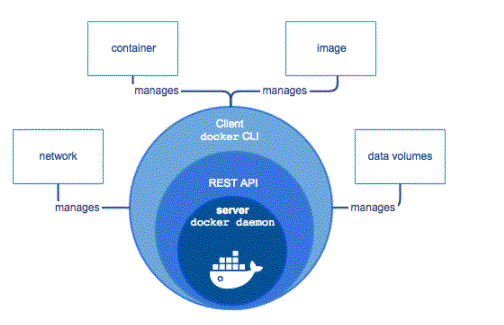
Conclusion:
I hope this gives you an idea of the Docker properties and its key components. Navigate near Docker to learn more and if you are interested in getting practical training, then check out this Docker Mastery tutorial.
Docker is a flexible technology that makes it easy to isolate and provides natural independence. However, in its current form, you should only use it in development and testing areas. I would not recommend using Docker in production programs yet, as it requires more maturity.


